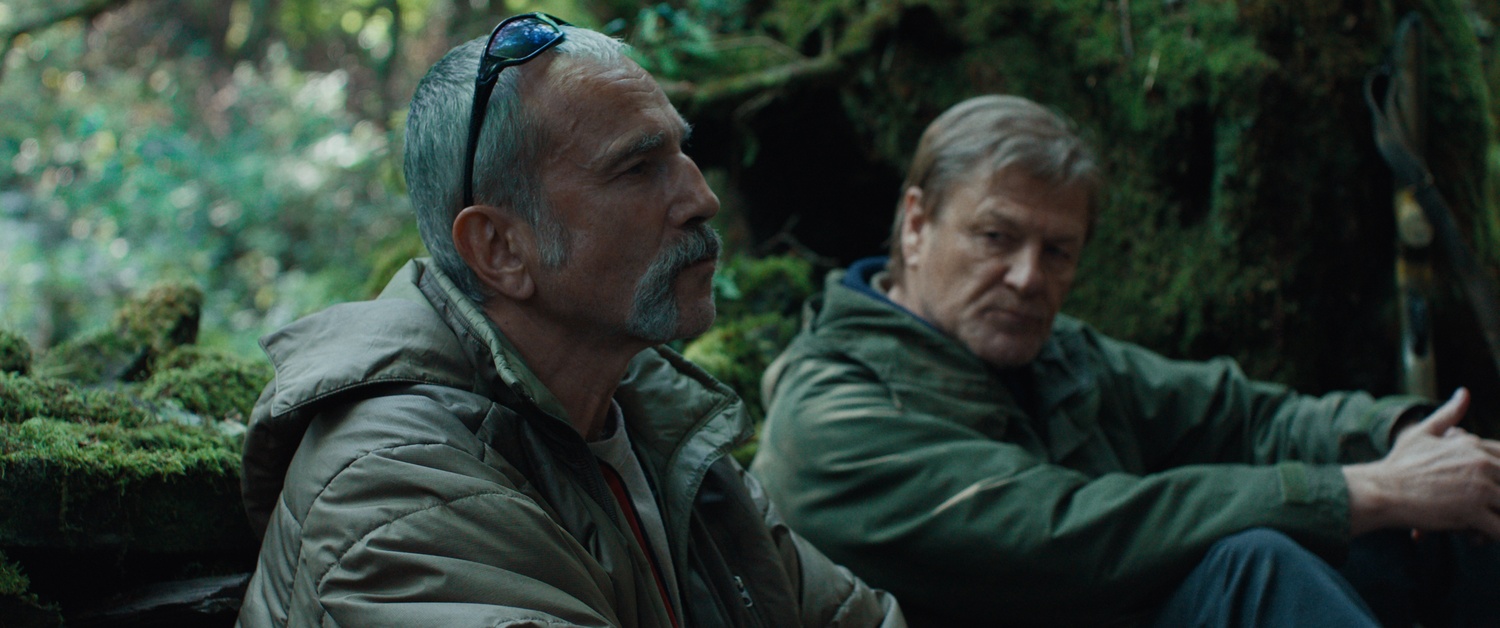
News
Summers Will Not Finish Semester of Teaching as Harvard Investigates Epstein Ties

News
Harvard College Students Report Favoring Divestment from Israel in HUA Survey

News
‘He Should Resign’: Harvard Undergrads Take Hard Line Against Summers Over Epstein Scandal

News
Harvard To Launch New Investigation Into Epstein’s Ties to Summers, Other University Affiliates

News
Harvard Students To Vote on Divestment From Israel in Inaugural HUA Election Survey
‘Anemone’ Review: Successfully Seeking Silence
Dir. Ronan Day-Lewis — 4.5 Stars

Does time really heal all wounds?
In Ronan Day-Lewis’ directorial debut, he puts his father — Daniel Day-Lewis — back on the big screen, in what can only be described as a triumphant return.
“Anemone” follows Jem (Sean Bean) as he ventures to reunite with his estranged brother Ray (Daniel Day-Lewis), a traumatized former soldier who has been living in isolation in the woods of Northern England for 20 years. From its undoubtedly powerful performances to its clever manipulations of sound and time, “Anemone” presents its story of family, trauma, and forgiveness with absolute poise from beginning to end.
As is expected by this point in his career, Daniel Day-Lewis is an absolute force in this film. Ray is a deeply troubled, complicated, and often unsettling character, and Day-Lewis’ tenderness and nuance in bringing him to life is an assertive reminder of the actor’s unparalleled talent. He is not, however, without support, with Bean delivering a phenomenally understated performance as concerned brother Jem, which perfectly balances the unpredictability and emotionality of Ray. Additionally, Samuel Bottomley and Samantha Morton, who respectively play Ray’s abandoned son Brian and former lover Nessa, provide emotionally captivating performances that perfectly round out the film’s small but effective cast of characters.
On the visual side of things, the excellent performances in “Anemone” are matched by stunning cinematography throughout. Beyond being simply beautiful on an aesthetic level — from uniform cool tones to gorgeous shots of the film’s natural forest setting — the cinematography is more impressive for the role that it plays in telling the story of the film. The first clear shot of Ray’s face comes when Jem arrives at Ray’s cabin in the woods to reunite with him early in the film. Until then, viewers never see a static, front-facing shot of Ray’s face, despite seeing the back of his head or a blurred shot of him in motion on multiple occasions. When Jem arrives in the woods, too, a massive wide shot captures his small figure disappearing in the vast expanse of the forest. Frames like these serve narrative purposes; they help to convey Ray’s isolation and emotional distance as well as emphasize the lonely expanse of Ray’s surroundings.
When Jem travels to reunite with Ray at the beginning of the film, the montage of his journey is uncommonly long for an uneventful travel sequence, creating a palpable sense of distance traveled and highlighting just how isolated Ray is from the rest of the world. In a time when attention has become such a limited resource, filmmakers often resort to instant gratification and increased pace in order to maintain the viewer’s attention. “Anemone” refuses to follow suit. Instead, it subverts conventions of pace and timing to manufacture discomfort and force us to have increased empathy for its disturbed main character.
This silence of Ray’s life is further amplified by the film’s exceptional sound design. Despite the film’s opening stages largely lacking dialogue, its establishing shots of the woods in which Ray lives are accompanied by thundering sounds of rustling leaves and howling wind. Ultimately, the nearly deafening noise that characterizes the beginning of the film serves to highlight the lack of conversation and utter loneliness in Ray’s life. In this way, the film once again defies conventions in order to reach a more effective end result. Dialogue is so often used as a crutch in the storytelling and emotional exposition of film, but “Anemone” prioritizes atmospheric noise over interpersonal communication, allowing the viewer to feel the full weight of Ray’s seclusion rather than having it be superficially explained.
“Anemone” is a film that is refreshingly uninterested in holding the viewer’s hand. Where increased dialogue and action have become the norm in mainstream cinema for the sake of holding attention, increasing audience comfort, and making sure the viewer knows exactly how they’re supposed to feel, this film is sensational for the very fact that it abandons those conventions entirely. In a world that is so increasingly loud, “Anemone” is exceptional in its ability to be quiet.
—Staff writer Nell G. Cunningham can be reached at nell.cunningham@thecrimson.com.
Want to keep up with breaking news? Subscribe to our email newsletter.
